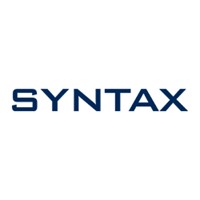Advantages of JDE E1 Powerform Applications over traditional applications
Traditional application format
Long time JDE users are very familiar with the Traditional Application format. A Find/Browse Form, a Fix Inspect for single record (“Header”) type information, a Headerless/Detail Form to enter multiple records that will be associated with the single “Header” record, and a Header/Detail form which allowed for two business views to be utilized within a single form. Typically, a user would launch an entry form and then, to update information or find related data, would navigate through a series of interconnected forms. The major limitations of this old format were User Visibility/Manipulation of Information and Ease of Navigation.
Sales Order Entry (P4210) is an example of this format. Any additional information regarding the order would need to be entered after the order was saved. Once the order existed, the user could take Row Exits or Form Exits from the Find/Browse form or the Header/Detail form to enter additional information to other tables that will be associated with the order. The closest the old format came to be being able to enter multiple records to more than one table was the Header/Detail form used in the entry of required header information and the detail lines of the order.
Powerform application format
With the introduction or the Powerform, the traditional elements still exist such as Find/Browse forms, Edit Forms, etc. The additional “Power” of Powerforms is that multiple sub-forms, grids, tab pages and views can be embedded, accessed or manipulated within a single Powerform. Powerforms eliminate the usual navigations from form to form by enabling the developer to place sub-forms onto the Powerforms, removing the need to take a Row or Form Exit.
Placing the sub-form itself on a power form is referred to as embedding. You can also reference an existing sub-form on a power form with an alias; this action is referred to as reusing. Typically, you reuse sub-forms that are designed to appear on numerous forms, such as the display of address book information.
Together, Powerforms and Sub-forms provides you with the ability to code:
- Multiple views on a form
- Multiple grids on a form
- Multiple tab controls on a form
- Tab pages with their own business view
- Reusable sub-forms either embedded or called from a process or button
- Tab pages can also contain a reusable Sub-form that can be accessed from multiple applications
The extended functionality of the Powerform increases visibility to information, and ease of navigation over the traditional application format. Many new processes such as Incident Management are all done within a Powerform application. The Edit form in the P54HS00 application contains many separate sub-forms, tab pages and grids that a traditional Edit Form could not support. The need to only enter the application once, enter all corresponding information to other tables greatly enhances the user experience and lessons the need to navigate to other applications.

Partner: Syntax
For over 40 years, Syntax has been providing comprehensive technology solutions to businesses of all sizes throughout North America.
Blogs & News
Events
Composable Architecture, What is it and why does your business need it ?
Composable Architecture focuses on the idea of a “building block” system, where components are designed and developed independently but can be combined to create a larger system that is flexible and scalable. Composable architecture is advantageous for developers and organizations because it allows for rapid development, cost savings, and greater flexibility. Additionally, it enables developers […]
Arantys for Commodity Trade Companies
Read a guide to discover how Commodity Trade companies can tackle their most significant business challenges this year. Learn how to integrate your processes and increase your margins with Arantys. An ERP & CTRM solution, fully build on Oracle JD Edwards. In the following download, we will tell you more about:
JD Edwards Opinion Poll
JD Edwards Opinion Poll Help JD Edwards by filling in our Opinion Poll! Bring the platform to a higher level. With your input, it is possible to fit the needs of JD Edwards users even better. Express your opinion on the current platform and help us with the development of the platform in the future. […]
Upgrading the JD Edwards E1Local Oracle Database
JD Edwards E1Local Oracle Database from 12c to 19c Oracle published a document in June 2020 outlining procedures required to Upgrade Oracle E1Local Oracle Database on the Deployment server. The version of Oracle E1Local Database produced by the Oracle JD Edwards EnterpriseOne Application update is E1Local OEE 12.1.0.2 (12c). Oracle E1 Local OEE 12.1.0.2 is […]
Release 22 and Your Digital Transformation
The impact of JD Edwards EnterpriseOne Release 22 on Your Digital Transformation Release 22 has all the new apps and tools available in JD Edwards EnterpriseOne. The release was debuted in October 2021. It has an influence on your digital transformation. Syntax tells you more about the three main umbrellas: automation, optimization, and transformation. Furthermore, […]